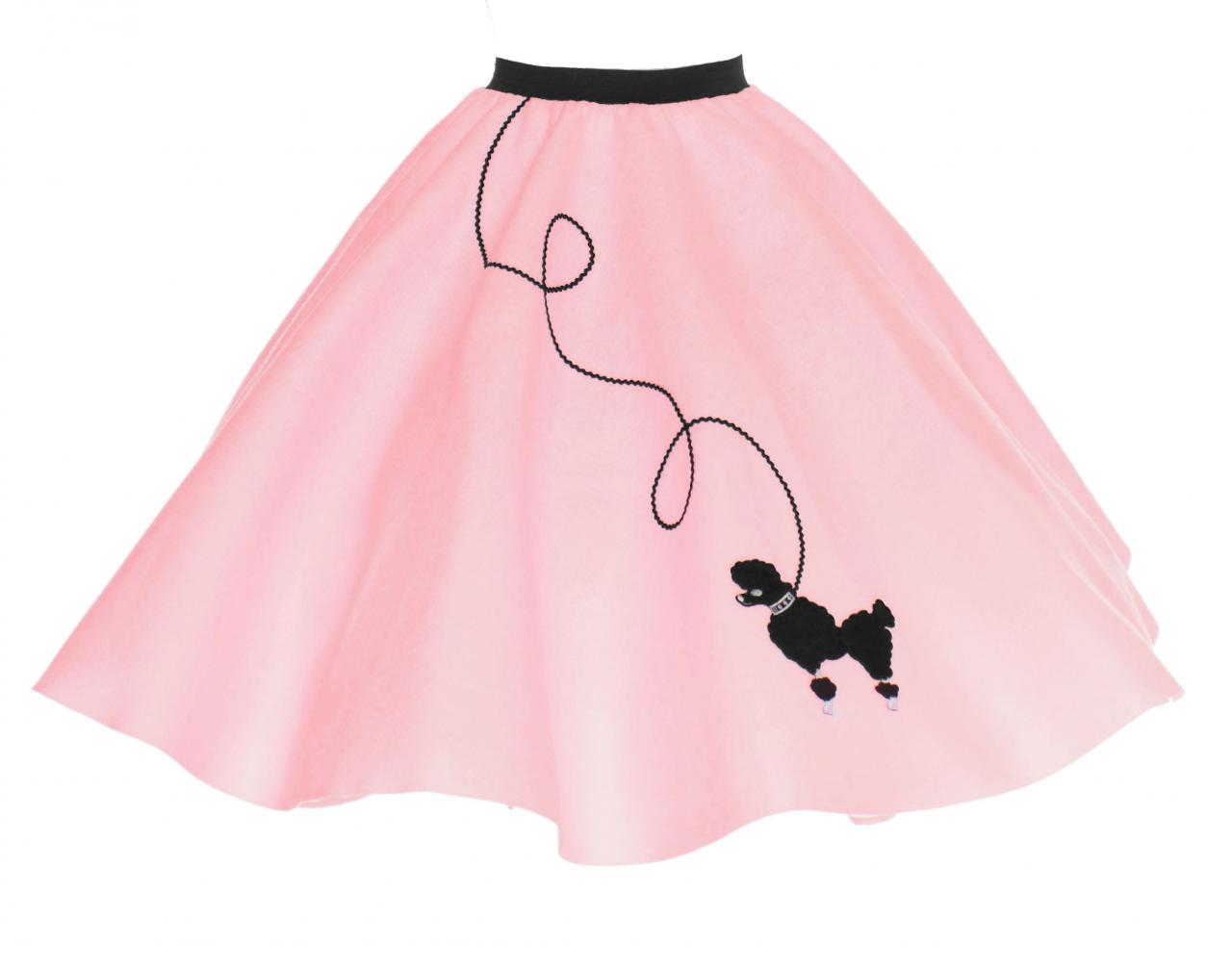
Poodle skirts, iconic symbols of the 1950s, embodied teenage rebellion and individuality, leaving an indelible mark on fashion and popular culture.
Originating in the mid-1950s, these skirts quickly gained popularity among high school girls, becoming a symbol of youthful exuberance and a departure from the conservative styles of the past.
Origins and History

The poodle skirt emerged in the mid-1950s as a symbol of teenage rebellion and individuality. Its origins can be traced back to the “New Look” of Christian Dior, which featured full, calf-length skirts with cinched waists.
Teenage girls began to shorten and embellish these skirts, adding poodle appliqués and other decorations. The poodle became a popular motif due to its association with French fashion and its playful, carefree image.
Early poodle skirt designs were often made from cotton or felt, and featured a simple circle skirt silhouette with a poodle appliqué on the front or side.
Cultural Significance
The poodle skirt quickly became a cultural phenomenon, representing the rebellious and independent spirit of teenage girls in the 1950s. It was a symbol of their rejection of traditional norms and their desire for self-expression.
The poodle skirt was featured prominently in popular culture, appearing in movies such as “Rebel Without a Cause” and “Grease.” It was also immortalized in songs such as “Poodle Skirt and Saddle Shoes” by Connie Francis.
Design Characteristics: Poodle Skirt
Typical poodle skirts were knee-length or slightly longer, with a full, flared silhouette. They were often made from cotton or felt, and featured a poodle appliqué on the front or side.
The poodle appliqué was a defining characteristic of the skirt, and it often depicted a stylized poodle in various poses. The poodle was typically black or white, but other colors were also used.
Over time, the design of the poodle skirt evolved, with variations in length, silhouette, and materials. Some skirts featured more elaborate poodle appliqués, while others incorporated other decorative elements such as sequins or embroidery.
Variations and Styles
There were several variations and styles of poodle skirts, each catering to different tastes and preferences.
- Circle skirts:The most common type of poodle skirt, featuring a full, circular silhouette.
- A-line skirts:A more fitted style, with a straight waistband and a slightly flared skirt.
- Full skirts:The most voluminous style, with a gathered waistband and a full, flowing skirt.
Influence on Fashion
The poodle skirt had a lasting influence on fashion, inspiring subsequent clothing items such as dresses and tops. Its playful, carefree style has been incorporated into contemporary fashion designs, with poodle appliqués and other retro elements appearing on everything from skirts to handbags.
The poodle skirt remains an iconic symbol of the 1950s, representing the rebellious and independent spirit of teenage girls.
Epilogue
The poodle skirt’s legacy extends beyond its era, inspiring contemporary fashion designs and serving as a reminder of the transformative power of teenage culture.
FAQ Corner
What is the origin of the poodle skirt?
The poodle skirt emerged in the mid-1950s as a symbol of teenage rebellion against the conservative fashion norms of the time.
Why were poodle skirts so popular in the 1950s?
Poodle skirts represented a break from traditional styles, allowing teenagers to express their individuality and challenge societal expectations.
What were the typical design characteristics of a poodle skirt?
Poodle skirts were typically made of felt or cotton, with a full, circular skirt and a poodle appliqué on the front.